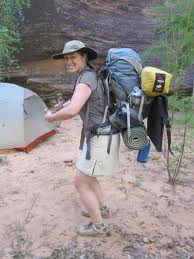by Ralph Ferrusi, Poughkeepsie Journal, Link to original post and PHOTOS
Hike name: Appalachian Trail (AT), Route 301 to Lion’s Head viewpoint
Location: Fahnestock Park, Putnam County
Length: 4.6 miles, round trip
Rating: Easy to moderate
Dogs: Fido four-footed through the rocks better than I did, but slept all the way home.
Map(s): New York-New Jersey AT Map Set, Map 2, N.Y. Route 52 to Hudson River.
Features: Maintainer Kerry Borchardt’s beautiful, bright white blazes. Tim Messerich’s Ralph’s Peak Hikers Cabin Volunteers beautiful stone steps. And, ahhh, that view back along the whole length of Canopus Lake.
Watch out for: This section of AT isn’t by any stretch “rocky,” but there are some fairly long stretches of rocky trail, particularly in the first mile or two in from 301. I don’t like to trip over rocks, or have to pick my way warily through them — not many hikers do (though there are some who seem to revel in it); part of the joy of hiking, particularly on long jaunts on the AT, is to step out, swingin’ your legs, getting into a good rhythm. Rocks are rhythm-busters, to say nothing of ankle twisters.
Over the last 20-some years I’ve made an effort to dig as many rocks as I can out of the mile and a half of AT I maintain up on Stormville Mountain. Rocks do indeed “grow” — the freeze/thaw weather cycles of the Northeast inexorably push rocks up out of the ground, and the normal wear and tear of hikers’ boots, rain and wind expose them even more. Spring thaws are one of the best times to dig ’em out, sometimes barehanded, sometimes with the carbide tip of a trekking pole; I rarely need a tool heftier than a good pointed spade.
Some sections of the local AT are rockier than others.
Thumbs up: The three miles of trail on Hosner Mountain are pretty rock-free, excepting seven (I always count them) medium-to-long stretches where you have to tread very carefully (there used to be eight, but George did some heroic work a while back to clean up one long stretch); Route 55 to Nuclear Lake; and Route 52 to I-84.
Thumbs down: I-84 to the Morgan Stewart Shelter, and Long Hill Road to the flag on Shenandoah Mountain always get me muttering to myself.
Background: The last time this hike appeared in Hike of the Week (HOTW) was Sept. 9, 2004 — HOTW No. 19! It beckoned, on a fine, crisp, blue-sky autumn day.
Hike description: Descend a bit, then ascend gently to the first of Tim and the volunteers’ superb 25-or-so rock steps. There’s a big rock face on the right that Kath always admires.
Uh-oh, here come the rocks, but they eventually alternate with some very nice, smooth, flat stretches. Enjoy the second set of the volunteers’ rock stairs, where a blue trail branches off to the left. Descend a bit, then cruise for a while a long, tantalizing open ridge (I’ve always wondered what it would be like to be walking up there) on the left, with occasional glimpses of the lake to the right.
After swinging through a big open bowl and crossing a small stream, the trail makes its most serious climb yet, gaining a surprising amount of elevation, then eventually descending so long you know it’s not going to be happy until you’re just about back down to lake level.
After a few more ups and downs, the ascent of Lion’s Head is a breeze, and the view is a stunner.
Read Full Post »
 The Appalachian Trail Conference is offering two contests:
The Appalachian Trail Conference is offering two contests:









